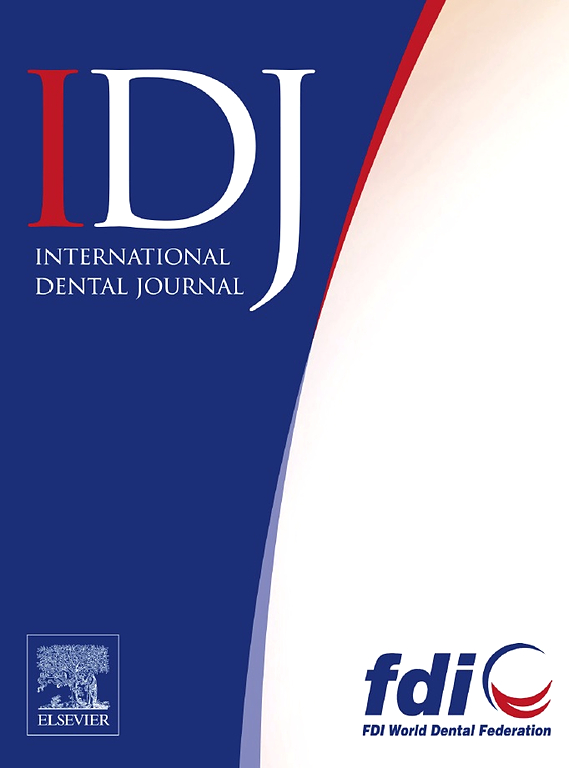The Use of a Respiratory Biofeedback Instrument in Managing Fear and Anxiety in Clinical Practice
IF 3.2
3区 医学
Q1 DENTISTRY, ORAL SURGERY & MEDICINE
引用次数: 0
Abstract
Introduction and aims
Fear and anxiety are commonly experienced across diverse healthcare settings globally, particularly in clinical practices where these emotions tend to be heightened due to the nature of the procedures. This single-blinded, randomized controlled trial aimed to investigate the effectiveness of a respiratory biofeedback instrument in reducing state and dental anxiety levels during dental extractions in adult patients.
Methods
The trial design and reporting adhered strictly to the CONSORT statement guidelines. Patients were randomly assigned to either the biofeedback group (n = 30) or the control group (n = 30). State anxiety levels were measured using pulse rate, respiratory rate, respiratory regularity, respiratory amplitude, Visual Analogue Scale (VAS) scores, and the State-Trait Anxiety Inventory (STAI). Dental anxiety was assessed using the Modified Dental Anxiety Scale (MDAS), and Dental Fear Survey (DFS).
Results
Results demonstrated that the biofeedback group had a significantly lower state anxiety level during dental extraction, as evidenced by lower respiratory rate (mean difference = –2.75 bpm, P = .03), higher respiratory regularity (5.63%, P = .035) and higher respiratory amplitude (48.83 units, P = .005). The biofeedback group also had a significantly lower STAI-State score after dental extraction (–2.04, P = .015), and a larger reduction in pulse rate from the time of extraction to after extraction (–3.61 bpm, P = .030). However, biofeedback implementation did not significantly affect dental anxiety levels, as measured by the MDAS and DFS.
Conclusions
This study highlights the potential benefits of employing on-site biofeedback instruments to alleviate anxiety during dental extractions in adult patients without the need for multiple training sessions.
Clinical relevance
Further research is needed to explore its impact on dental anxiety levels and investigate its applicability to a broader range of dental procedures.
呼吸生物反馈仪器在临床治疗恐惧和焦虑中的应用
导言和目的恐惧和焦虑在全球不同的医疗保健环境中都很常见,特别是在临床实践中,由于手术的性质,这些情绪往往会被加剧。这项单盲、随机对照试验旨在研究呼吸生物反馈仪器在降低成年患者拔牙过程中的状态和牙科焦虑水平方面的有效性。方法试验设计和报道严格遵循CONSORT声明指南。患者被随机分配到生物反馈组(n = 30)和对照组(n = 30)。使用脉搏率、呼吸频率、呼吸规律、呼吸幅度、视觉模拟量表(VAS)评分和状态-特质焦虑量表(STAI)来测量状态焦虑水平。采用改良牙科焦虑量表(MDAS)和牙科恐惧调查(DFS)评估牙科焦虑。结果生物反馈组患者拔牙过程中状态焦虑水平明显降低,呼吸频率降低(平均差值为-2.75 bpm, P = 0.03),呼吸规律性提高(5.63%,P = 0.035),呼吸幅度提高(48.83单位,P = 0.005)。生物反馈组拔牙后STAI-State评分显著低于拔牙组(-2.04,P = 0.015),拔牙时至拔牙后脉搏率下降幅度较大(-3.61 bpm, P = 0.030)。然而,通过MDAS和DFS测量,生物反馈的实施并没有显著影响牙科焦虑水平。结论本研究强调了使用现场生物反馈仪器减轻成年患者拔牙过程中焦虑的潜在益处,而无需多次培训。临床相关性需要进一步的研究来探讨其对牙科焦虑水平的影响,并调查其在更广泛的牙科手术中的适用性。
本文章由计算机程序翻译,如有差异,请以英文原文为准。
求助全文
约1分钟内获得全文
求助全文
来源期刊

International dental journal
医学-牙科与口腔外科
CiteScore
4.80
自引率
6.10%
发文量
159
审稿时长
63 days
期刊介绍:
The International Dental Journal features peer-reviewed, scientific articles relevant to international oral health issues, as well as practical, informative articles aimed at clinicians.
 求助内容:
求助内容: 应助结果提醒方式:
应助结果提醒方式:


